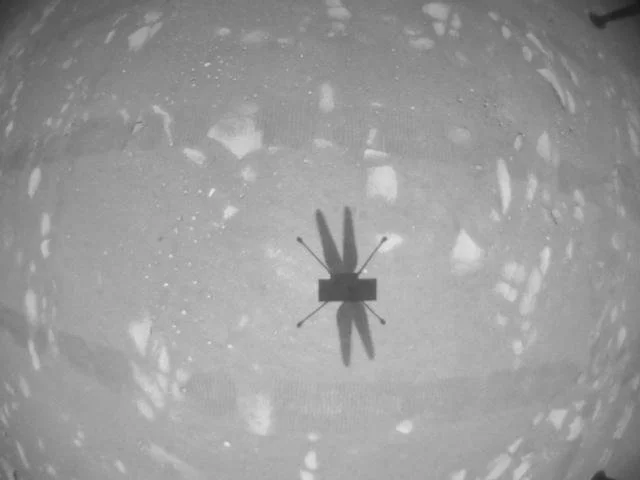NASA's Ingenuity Mars helicopter made history again today by flying horizontally for the first time. At 5:33 am EDT, the tissue-box-sized rotorcraft lifted off from what's been dubbed "Wright Brother's Field" on the Red Planet and flew for 51.9 seconds before descending safely to the ground.
Today's flight comes on the heels of Ingenuity's first flight that took place on April 19, as the little helicopter began its 30-day test program. As with the first, the second flight was carried out autonomously due to the minutes-long delay for signals to travel to and from Earth. During the flight, the Perseverance rover relayed telemetry data back to Mission Control at the Jet Propulsion Laboratory, California, and recorded video for later transmission.
Ingenuity reached an altitude of 16 feet (5 m), then tilted its rotors by 5 degrees, generating lateral thrust that propelled the craft for a distance of 7 feet ( 2 m). It then hovered in place and turned in different directions for its onboard camera, then returned to the center of the field before descending for a soft landing.

NASA calls Ingenuity a high-risk, high-reward technology demonstration because, though it is supported by Perseverance, it isn't seen as a key part of the main mission. This is because NASA engineers have had to work with many unknowns, as well as the known problems of flying on Mars, including the tenuous atmosphere, low gravity, and freezing nighttime temperatures.
Having survived two successful flights, the Ingenuity team is now looking at more ambitious goals for later tests.
"So far, the engineering telemetry we have received and analyzed tell us that the flight met expectations and our prior computer modeling has been accurate," says Bob Balaram, chief engineer for the Ingenuity Mars Helicopter at JPL. "We have two flights of Mars under our belts, which means that there is still a lot to learn during this month of Ingenuity."
Check out Ingenuity's second flight:
Source: NASA






